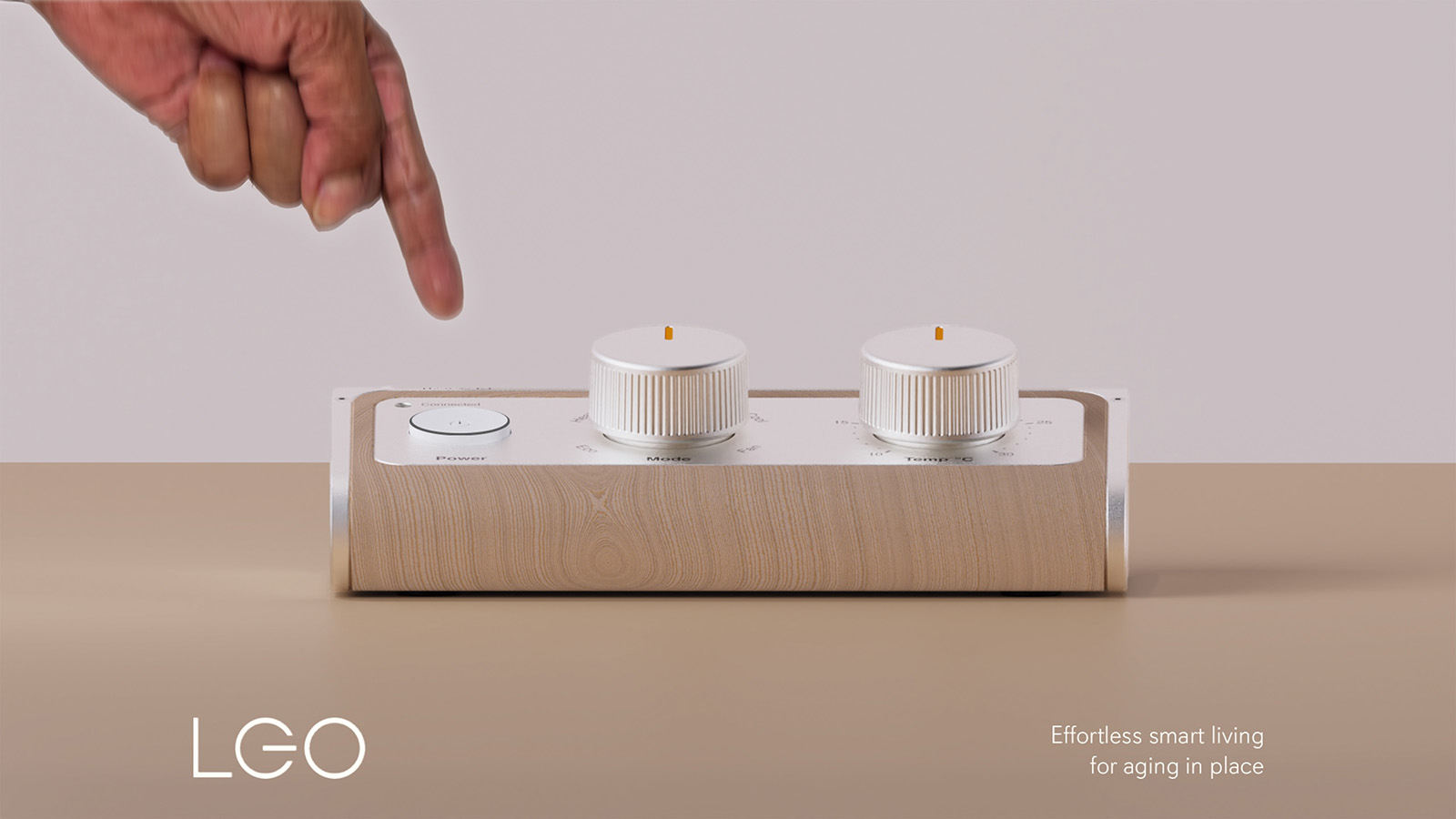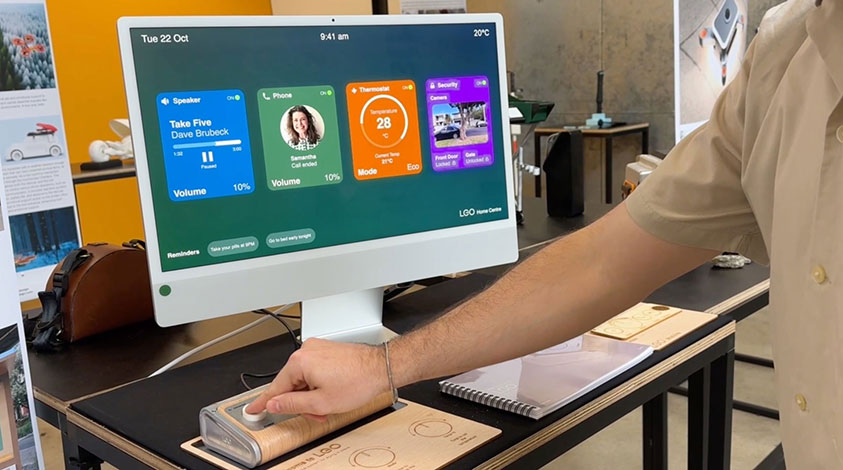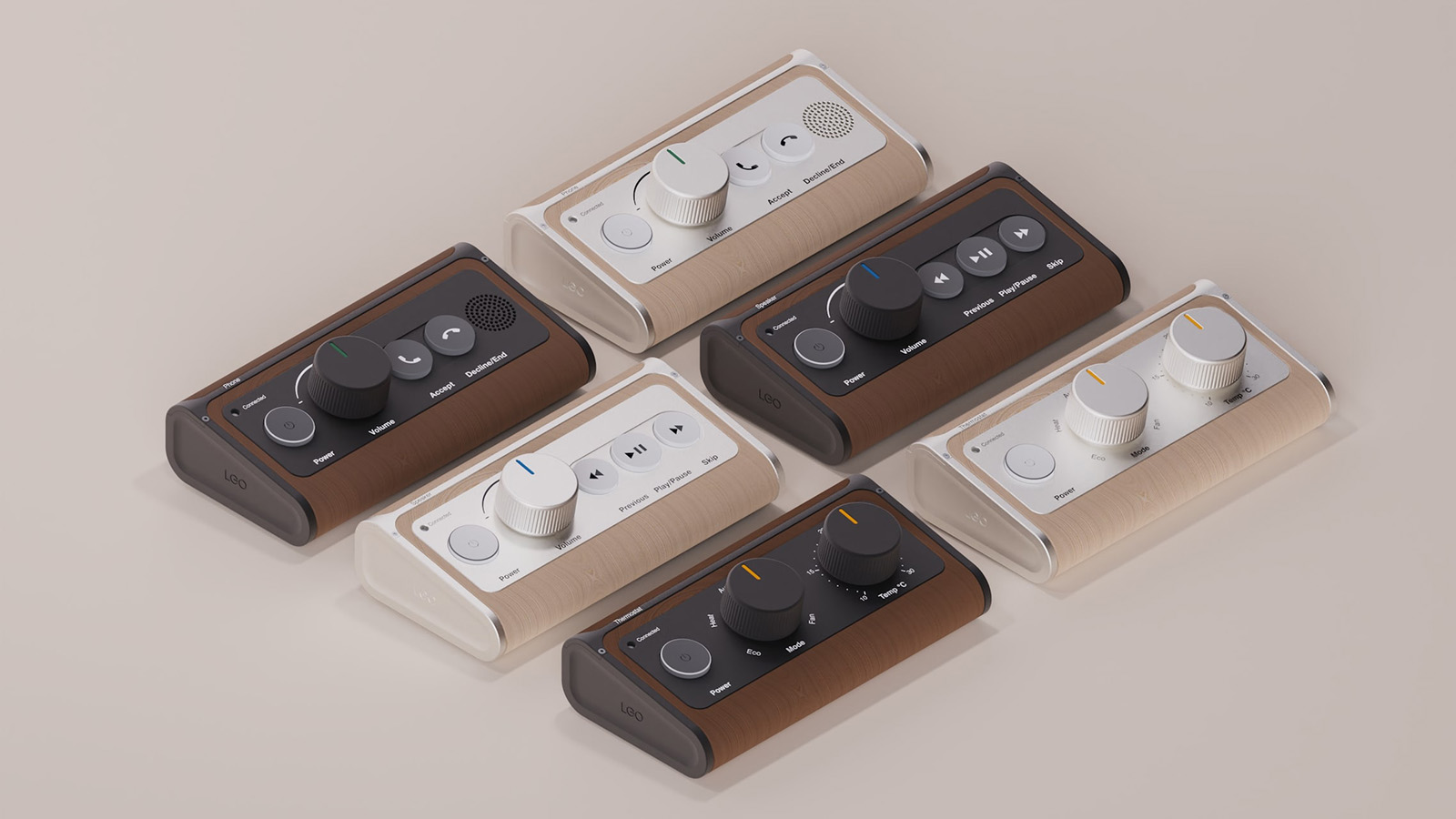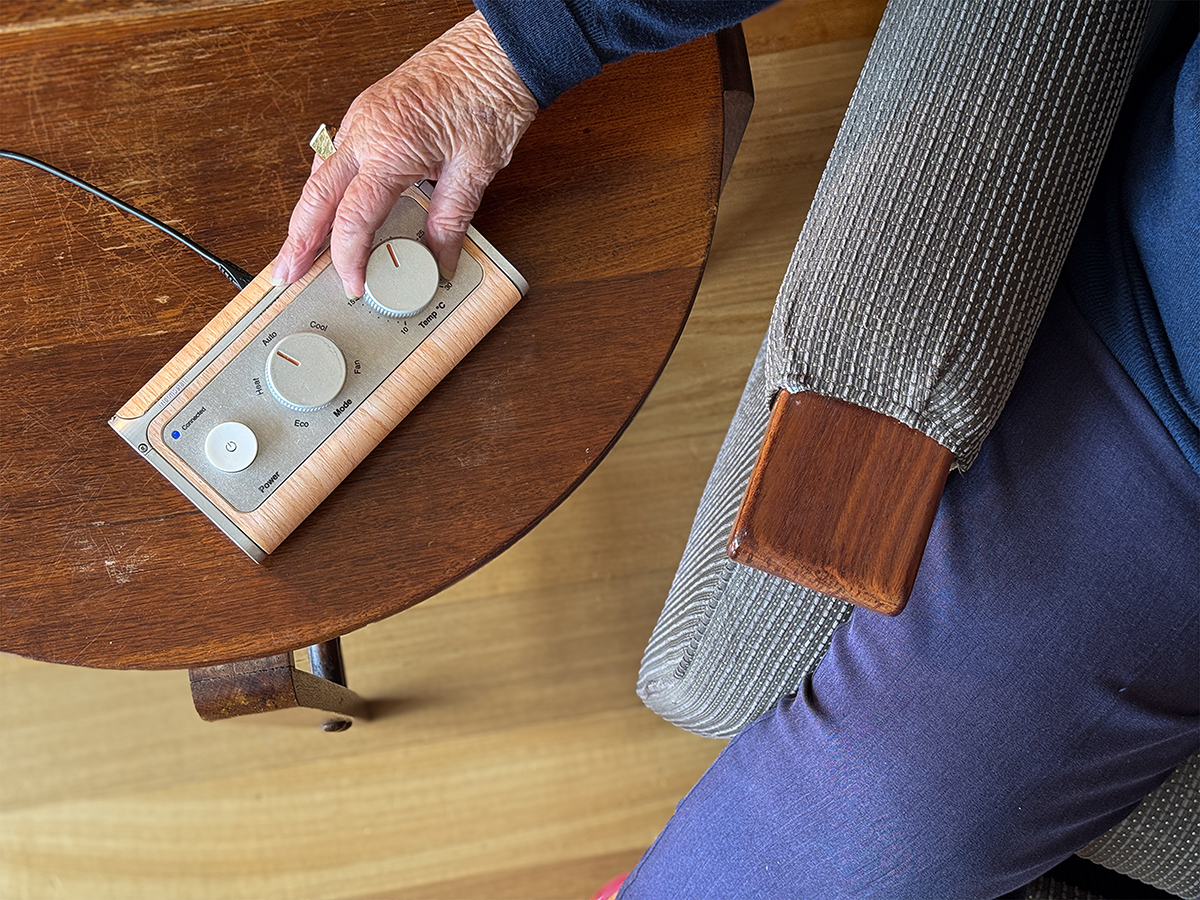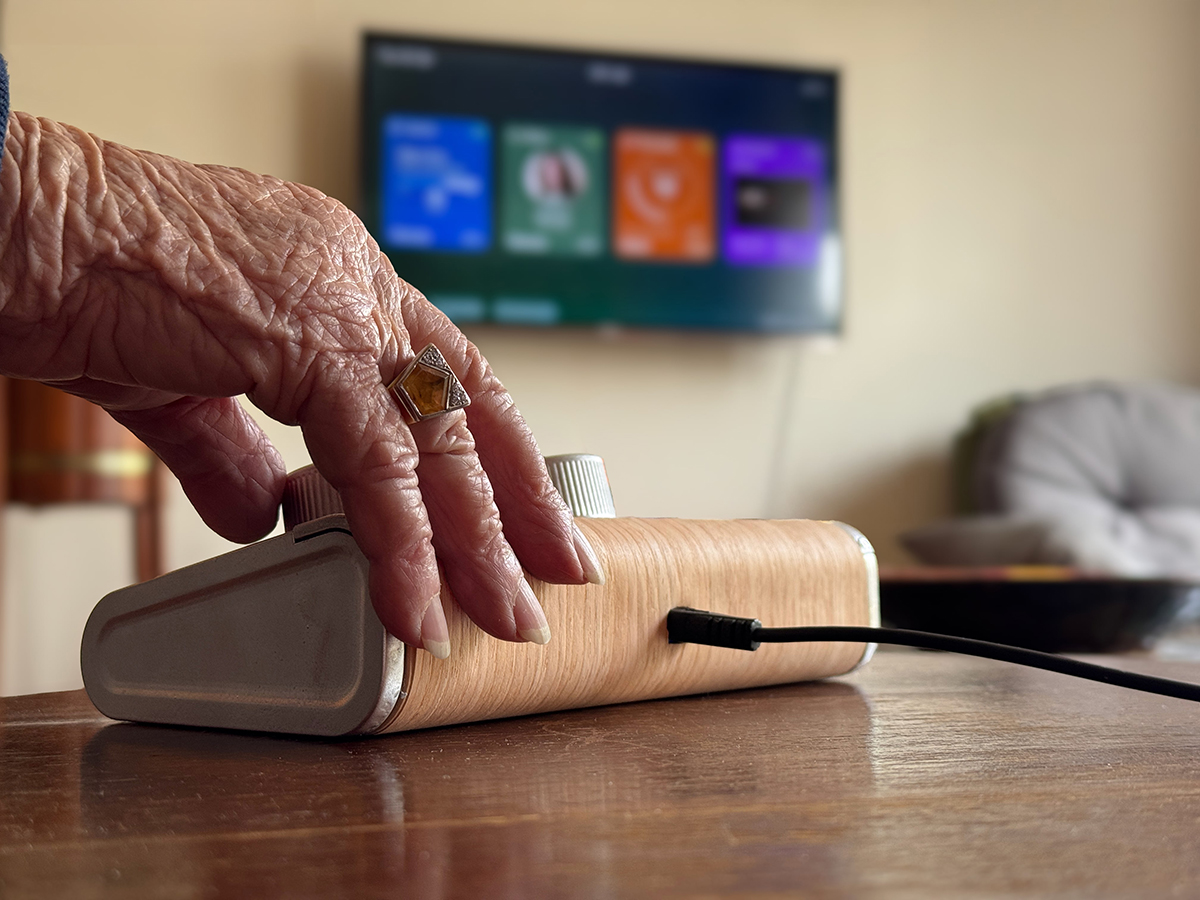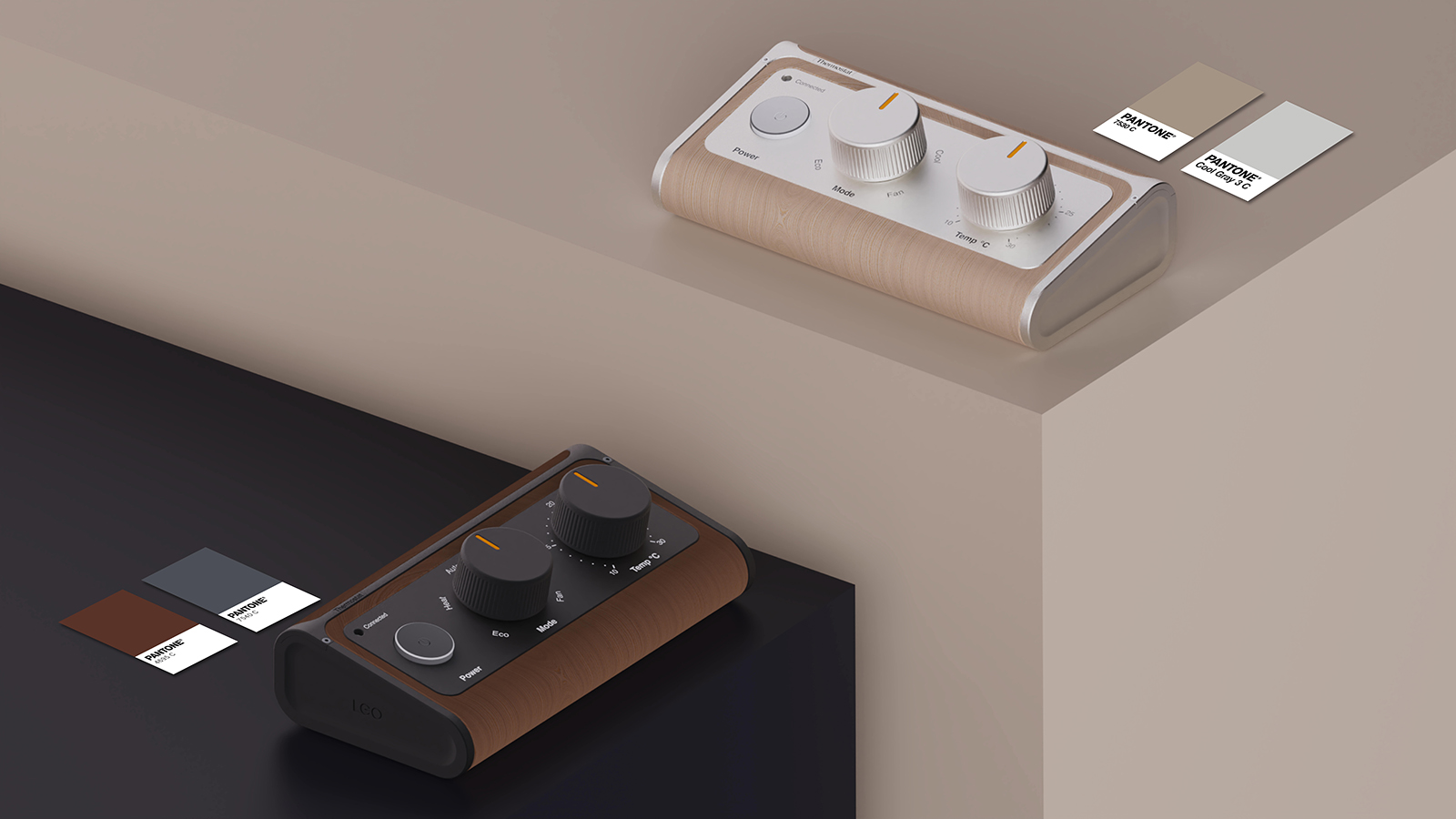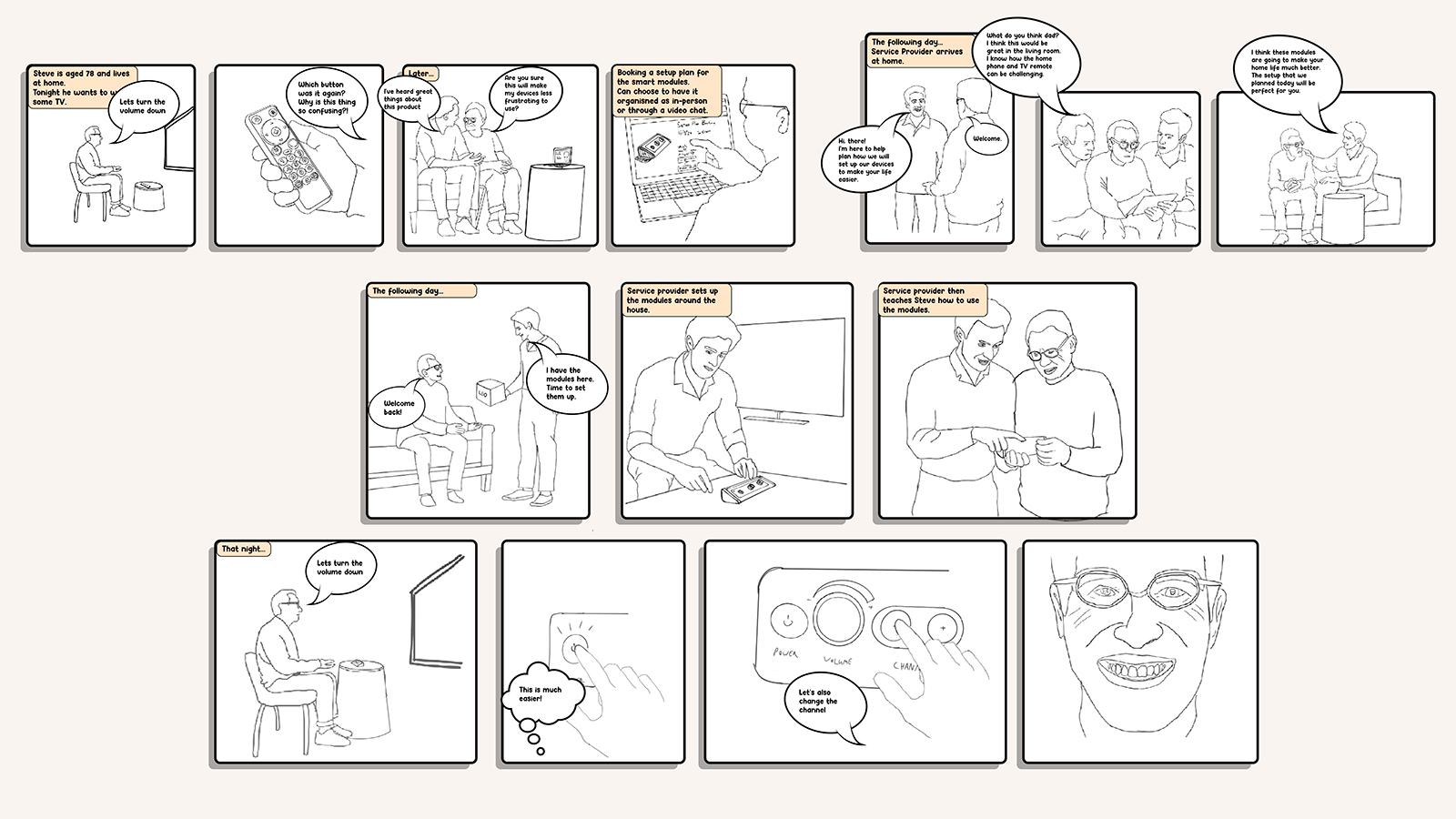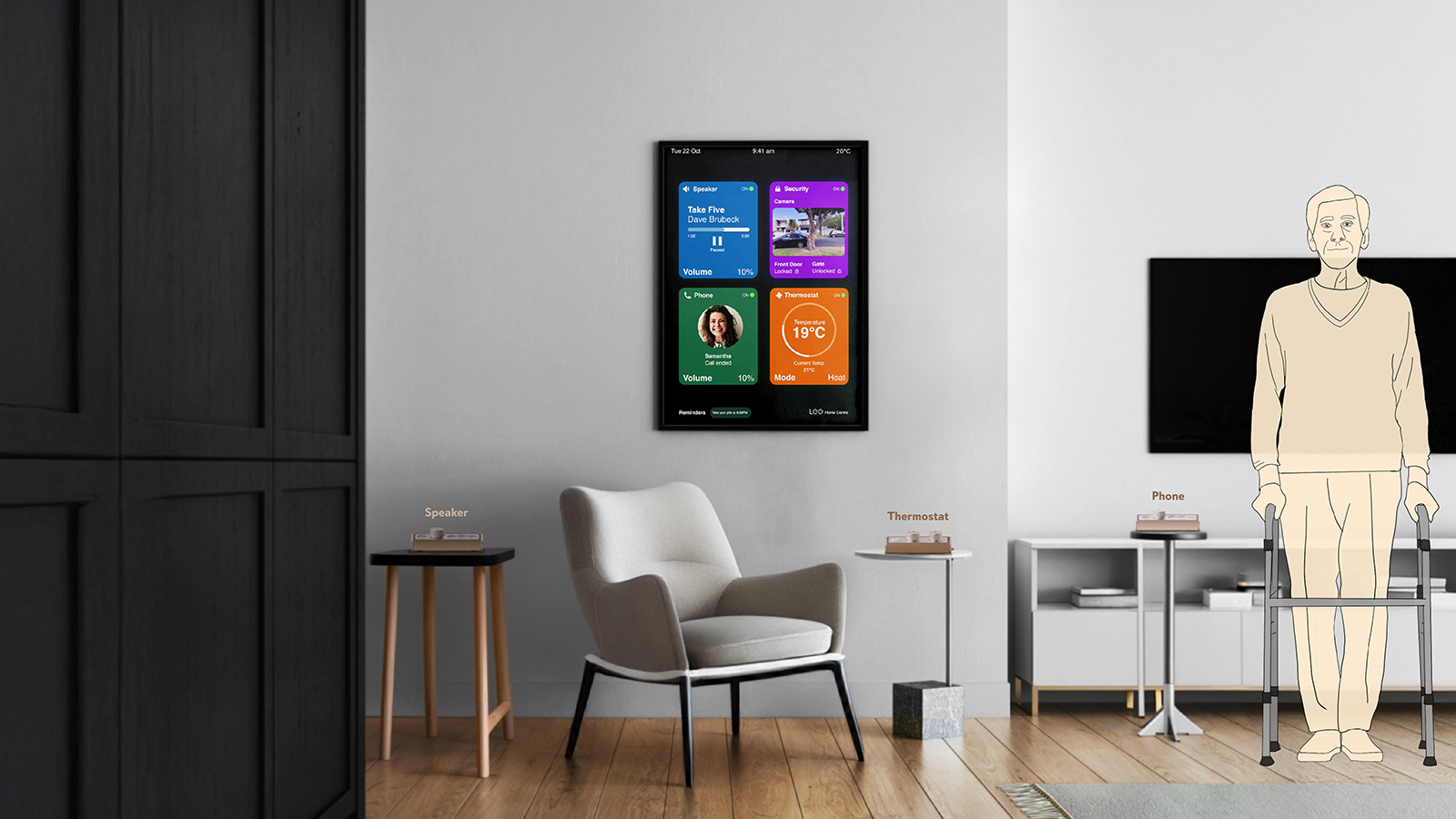The LEO project followed a rigorous human-centred research and design. Extensive user research including; interviews, stakeholder mapping, user journey mapping, and UX testing uncovered the barriers older adults face with modern smart technologies, such as physical discomfort, low digital literacy, and cognitive load.
These insights informed a clear problem statement and a “How Might We” question, guiding ideation around accessible, intuitive smart home interfaces. Initial concepts were evaluated against elderly users’ needs, with the modular “LEO” system selected for its adaptability and familiarity. Iterative prototyping and testing conducted with elderly participants refined the affordances, ergonomics, and interaction patterns of each module, resulting in a set of physical interfaces that are familiar yet functional.
The final product suite includes tactile modules (speaker, phone, thermostat), a simplified UI dashboard, and a service offering setup and ongoing support. The design emphasises readability, high-contrast elements, and nostalgic form language inspired by traditional home electronics. It integrates modern UI principles with retro aesthetics to foster trust and usability. Manufacturing was considered early in the design with parts selected for ease of production (e.g., CNC-milled aluminium, injection-moulded housings, and off-the-shelf components). The prototype was professionally finished, combining electronics soldering, 3D printing, aluminium detailing, and a polished cherry wood veneer. By centric on the elderly experience, the final design not only met the brief, it went above and beyond it.
LEO is more than a smart home device; it’s a system that supports aging in place with dignity, confidence, and independence.

